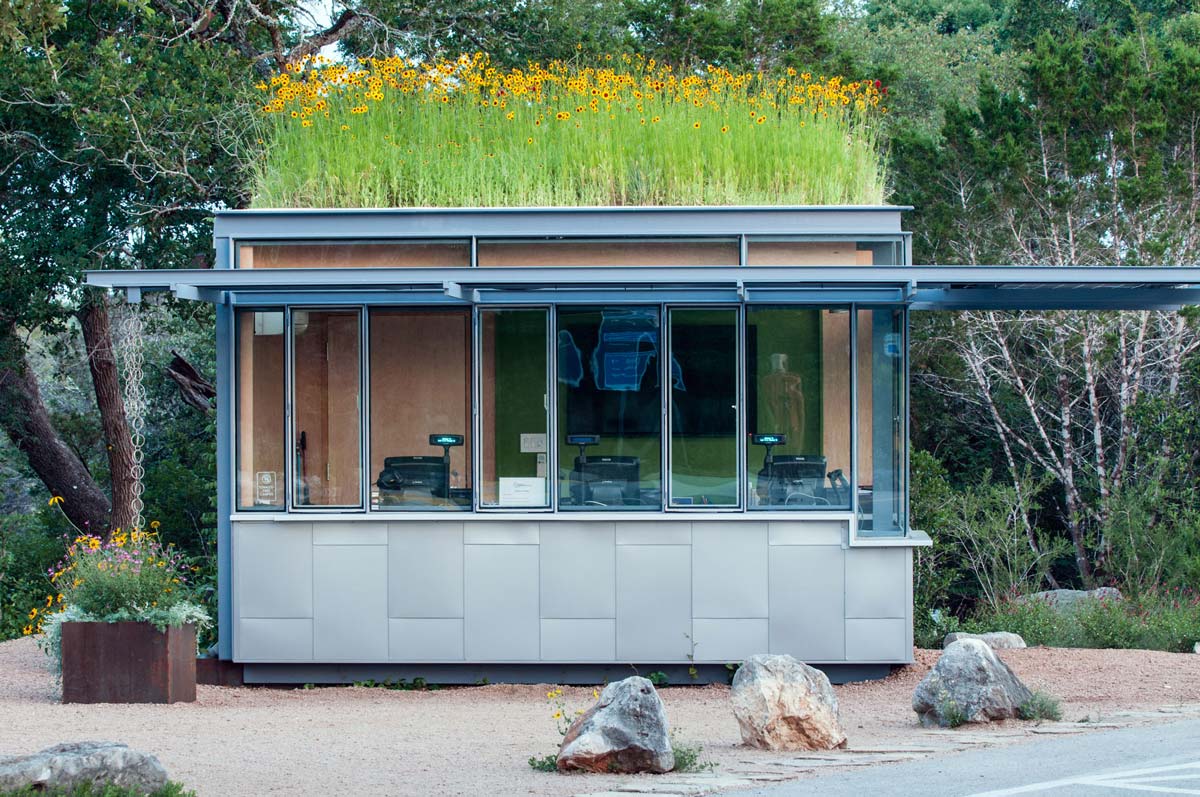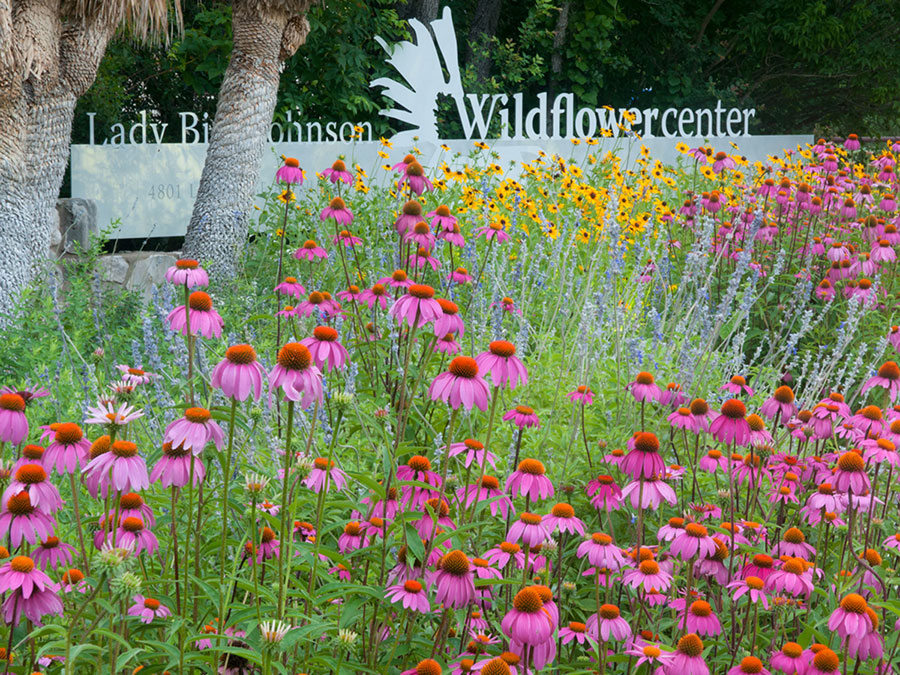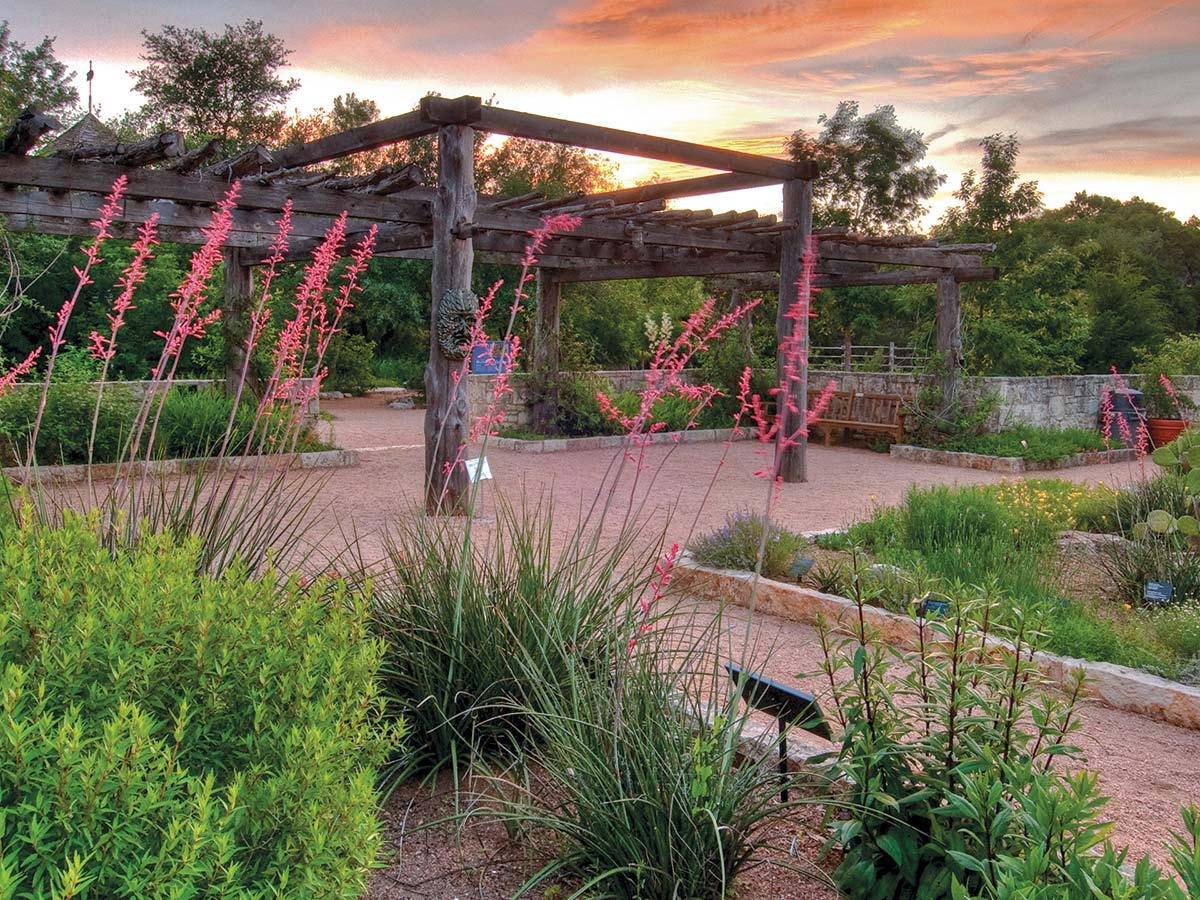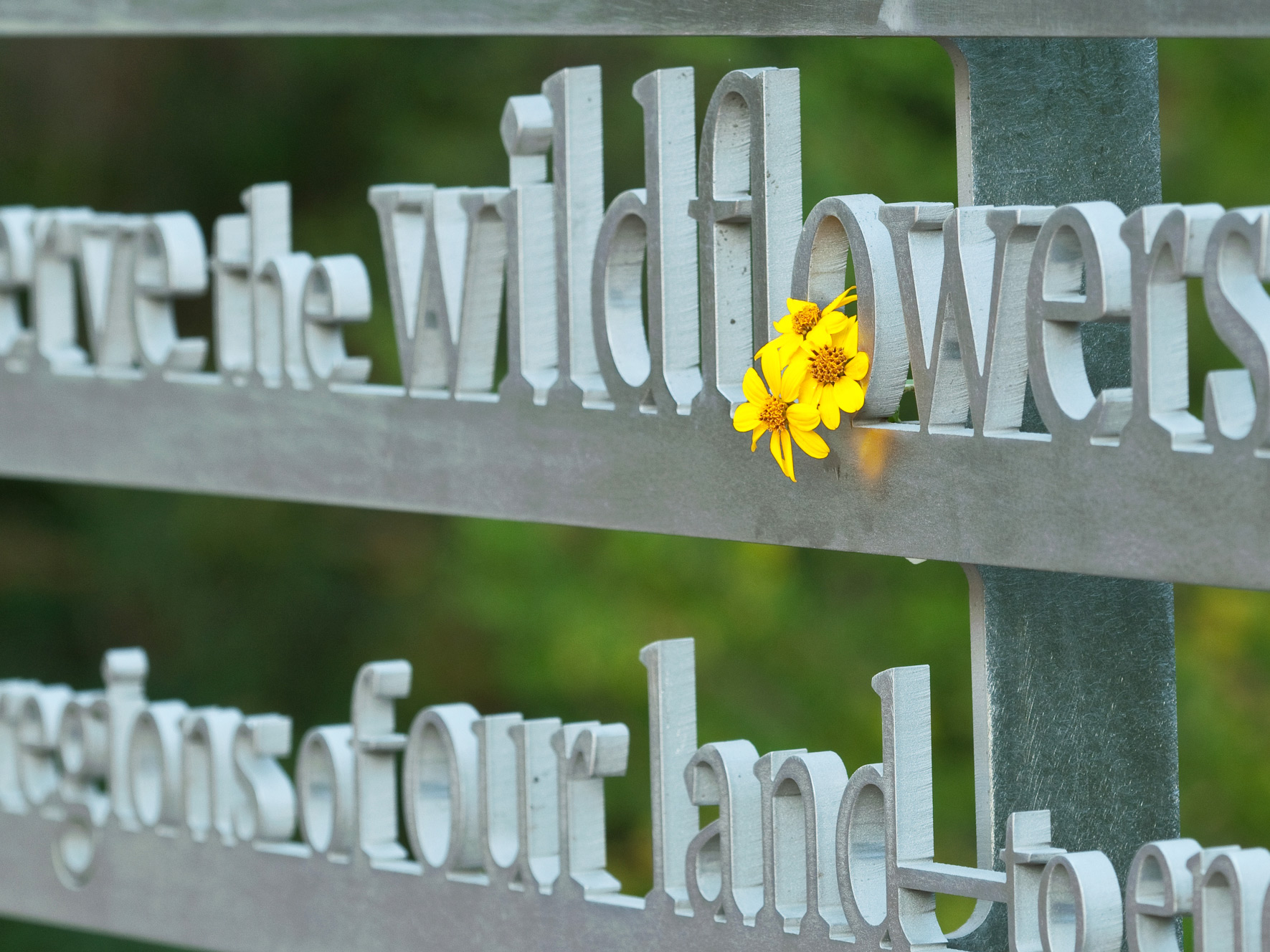SUSTAINABILITY
The Wildflower Center is a national leader in the sustainable construction, installation and maintenance of its landscapes and buildings. We are committed to creating beautiful gardens and landscapes that are also ecologically functional and conserve resources.
So, the Center is more than “just a pretty place.” We showcase the beauty of native plants, but equally important, one of our goals is to create landscapes that provide environmental benefits. In fact, the we led the development of the SITES landscape rating system in collaboration with the U.S. Botanic Garden and the American Society of Landscape Architects.
Some notable sustainable features:
- 100% native plant gardens
- 65,000-gallon rainwater harvesting system
- Efficient low-flow landscape irrigation system
- Use of local materials, harvested on site and nearby
- Solar arrays for power generation

The Admissions Kiosk features a green roof, solar and sustainable materials.
Materials
- The Wildflower Center’s award-winning buildings are constructed of Texas-derived sources of sandstone, limestone and other materials.
- The Admissions Kiosk uses sustainable materials such as cork flooring, recycled steel, environmentally certified wood siding and other elements obtained locally.
- The Wildflower Center offers digital membership cards, reducing material waste and environmental production cost associated with physical cards (while providing easy access to membership benefits).
- We use locally produced mulches in planting beds, including crushed pecan shells that are a byproduct of the local pecan industry Trees removed as part of gardening activities are mulched on site for use on trails.
- We use native vines, limestone rocks, tree stumps and other materials harvested from the center grounds or nearby in our gardens, minimizing energy use in transportation.
Water
- Water is a tremendously important, finite resource. Though we are a botanic garden that requires water to effectively inspire the conservation of native plants, we water judiciously.
- A series of rain gardens are located throughout the new Luci and Ian Family Garden to capture and slow the movement of stormwater before it enters a natural creek. Several other stormwater ponds on site serve similar purposes.
- In-ground, drip irrigation is used throughout new gardens, and above-ground sprinkler heads have been changed to more efficient spray rotor options for other gardens.
- We irrigate our gardens during evening and early morning hours when humidity is high and winds are low, reducing evaporation and blowing.
- In an average year with 30 inches of rain, we can collect 175,600 gallons of rainwater.
- Older toilets have been replaced with water-efficient, 1.6-gallon single flush toilets.
Soil
Soil is the foundation of a sustainable garden, cleansing water; storing water for plants, wildlife and people; and, providing habitat for microscopic bacteria and earthworms that transform wastes into nutrients.
- We avoid soil compaction during garden construction, save and amend topsoil for reuse in new garden beds, add compost to enrich the soil as needed, and use local, native mulch to maintain moisture content.
- Our gardens and landscapes use either a locally sourced soil blend and/or native soil.
- Many garden beds have native soils that need no modifications because the native plants are already adapted to those soils.
Vegetation
The Wildflower Center is dedicated to the preservation and re-establishment of native plants in natural and planned landscapes.
- The Center is home to 1,000 or more species of plants native to Texas.
- Our building footprint is small to retain as much native landscape as possible.
- We grow our own plants in a facility on site and plant native plants grown locally at area nurseries.
- We judiciously collect seeds from plants on site and from native landscapes with permission.
- We salvage plants from construction areas and replant them in new garden beds.
- We actively eradicate non-native invasive species, which can cause significant ecological problems.
- Garden debris and tree limbs are composted locally rather than entering landfills.
Energy
Reducing our energy footprint is important for sustainability.
- Solar panels atop the Robb Family Pavilion in the Luci and Ian Family Garden harness 9,150 watts DC. That covers about half the Family Garden’s energy needs.
- The Admissions Kiosk is shaded by solar panel awnings that provide a 1.44 KW grid for the building.
- Compact fluorescent and incandescent lights are being replaced with LED lighting wherever possible.
Wildlife
Gardens and landscapes play a critical role in promoting biodiversity and supporting animals.
- Our gardens are recognized as a certified wildlife habitat by the National Wildlife Federation for their ability to provide food, water and cover, and space for reproduction for wildlife.
- The grounds are visited by at minimum 93 types of butterflies, 148 bird species and 15 types of mammals.
- Old flower stalks with ripe seeds are left standing for American goldfinches, painted buntings and other seed-eating birds.
- Natural elements such as snags, tree falls, briar, and other vegetation are left in strategic places to provide habitat for various animals.
- Owl boxes, bee boxes and our Insectary all provide protected places for wildlife.
Program Overview
Learn more about the Center's programs
Current Facts
The Wildflower Center by the numbers
Our History
Our founding and development from 1982 to today




